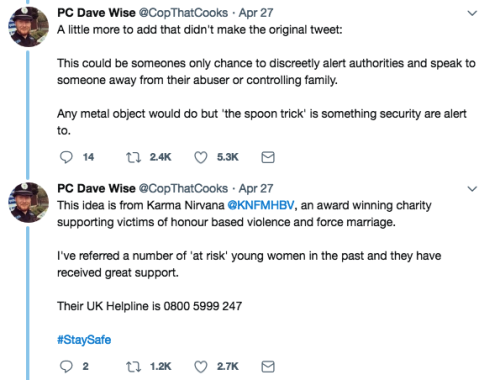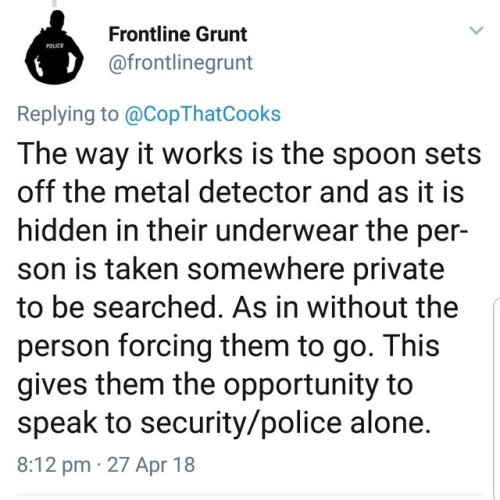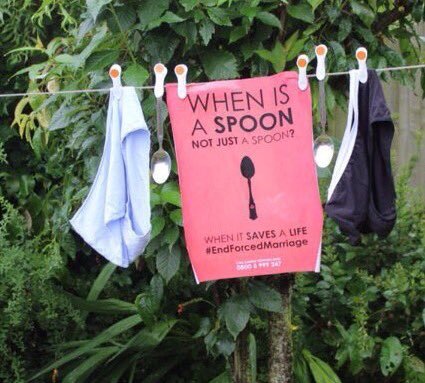Zach Snyder Sandwich
Zach Snyder Sandwich
I originally posted this on the cracked forums in a discussion about the new Justice League movie, in particular the very mixed reaction to Man of Steel and Zach Snyder's work in general.
_____
I think the things that make Snyder both loved and reviled by such a variety of people can be explained in a metaphor. Movies are like sandwiches. There are basically three layers on which movies work:
Style. The visuals, the music, the pacing, the swell of emotion, etc. This is the bread – it won’t singlehandedly save a bad sandwich/movie, nor is it absolutely necessary that it’s brilliant, but it adds a lot to the experience, and some people experience a movie primarily like this.
Text. What the characters actually say and do, the story itself, and so forth. This is the meat, cheese, vegetables, condiments, all the substance. The actual quality and depth of the dialogue belongs here.
Subtext. What the writer/director is actually saying under the surface, whether intentional or not. This is the nutritional content. You usually have to be looking for it to properly appreciate this level of storytelling (or sandwich making), but it makes it a richer experience.
Most people experience movies in a mix of the first two levels. But people who really love movies and take the time to examine them tend to appreciate the third level a lot more. And different people care about different things. The film critic known only as Vern is the guy who wrote Seagalogy, which examined the movies of Steven Seagal for their themes, both individually and running, and took them seriously and critically as art. (It’s one of the best and most entertaining works of criticism I’ve ever read.) Like many Zach Snyder fans, Vern tends to be most interested in Style and Subtext, and wrote both a positive review and a later counter-post about some of the common arguments against it. The same goes for Phil Sandifer, who wrote an interesting defense of Man of Steel primarily on subtextual ground.
These levels can mix together different ways. Steven Spielberg movies are very consistent: the Style, Text, and Subtext are all doing exactly the same thing, and the result is a very smooth experience, regardless of quality (which is generally excellent).
But you don’t have to be that consistent to make it work. Take the Somewhere Over the Rainbow scene from Face/Off. The Style is beautiful and magical, while the Text is a kid watching a bunch of people getting brutally murdered. Consequently, the subtext is about how the pervasive tragedy and horror of violence affect even those who aren’t involved and may not even understand what’s happening, and the jarring contrast makes this all the more provocative.
Paul Verhoeven is a master of this sort of thing. Robocop, on the surface, is one of the most badass action flicks of the ‘80s. The text strongly resembles an unusually well-done Superhero origin story, with strong characters, memorable dialogue, and taut plotting. But the Subtext is a rich and hilarious satire of American culture that’s constantly criticizing its own story. It's a terrific movie on any of those three levels, but put together they become something truly special. It's like Judge Dredd enacting the life of Christ.
So a Spielberg Sandwich tastes different every time, but it’s always a perfectly balanced mix of ingredients, and it tastes exactly as healthy as it is (which also varies). A Verhoeven Sandwich tastes like junk food, but is surprisingly nutritious. A Michael Bay Sandwich is actually an entire bag of Oreos. The first bite is so delicious, but by halfway through you start to feel sick, by the end you actually are sick, and Heaven help you if you try a Bay marathon.
On those three levels, Zach Snyder is brilliant at Style, very clever at Subtext, but utterly clueless about Text, and ignorant about how the three fit together. Take Watchmen. It’s a gorgeously stylized realization of the comic, and all the rich themes are intact. But the violence (for example) is all wrong; one of the main themes is the awful pointlessness and tragedy of violence, and in the comic, it’s horrifying. That theme is still there, but Snyder shoots it fetishistically, Rodriguez-style, reveling in long fight scenes and beautiful splashes of blood and gore. The result is less provocative than confounding. Like, are we supposed to be having fun, or not? Similarly, the casting seems spot-on, yet the acting is incredibly uneven, because Snyder doesn’t adapt the dialogue to the rhythms that work when spoken aloud, and doesn’t adjust the flaws in the comic. Malin Ackerman got a lot of crap for her performance, but she plays Silk Spectre II perfectly as written. SS2 is a poorly-written character in the comic, spouting comic-book style dialogue.
Or Sucker Punch. It looks great, and thematically it’s an angry and brilliant condemnation of misogyny and sexism, but the characters are one-dimensional, the plotting is video-game level, and it fetishizes the characters too much for the criticism to actually stick correctly.
There’s probably no better representative of the good and bad points of Man of Steel than Jonathan Kent. Stylistically, Snyder’s vision of this small-town Kansas farmer is beautifully realized, full of gorgeous imagery and inspiring-sounding speeches about hope, all climaxing in his mythic death by tornado while saving others. And Kevin Costner pours his heart and soul into the role. But textually, he’s a stubborn jackass who tries to convince Superman to not save people. He dies because he goes back to save the dog, while telling Superman not to save him for no damn reason whatsoever. Meanwhile, the subtext is a provocative condemnation of the concept of small-town middle America being the heartland of the country; it’s turned ultra-conservative, and conservatism has degenerated into moral bankruptcy while loudly proclaiming its morality. So either the American heart is deeply corrupt, or Kansas ain’t in Kansas in more, if you catch my drift. (I’m not sure I catch my drift)
For some people, that imagery combined with Costner’s soulful performance makes the character work. For others, that subtext is intriguing enough to make it worthwhile. For the rest, it’s absolutely infuriating for obvious reasons – you hate him for being awful, and you subconsciously hate him for making the story so slow and pointlessly grim.
And, more to the point, doing all three of those together just doesn’t work. He can’t be the inspirational heart of the movie, and one of the principal antagonists, and also a satirical take on American Conservatism, while having anything remotely to do with god-like aliens punching each other over whose genocide is the morally correct one. The other problems largely fall into that.
So some people eat their Man of Steel Sandwich and go, “Man, this bread is off the hook!” (or whatever you kids are saying these days) Others say, “For something with this much junk in it, it’s surprisingly nutritious, and wrapped in a crust that’s quite exquisite.” And everyone else is like, “This is a terrible sandwich! Sure, the bread is good, but it doesn’t go with these ingredients at all! The meat is month-old bologna! The cheese is great (the cheese is Russell Crowe), but it’s only on the first half. There’s way too much lettuce, the tomatoes are bad, and the jalapenos somehow aren’t even spicy! And even if, for some insane reason, you actually want mustard, ketchup, mayo, and salsa on the same sandwich, you don’t drown the entire thing in all of them. By the end, you can’t even taste the bread!”
But hey, at least it’s not a bag of oreos.
More Posts from Jjgaut and Others
I love how after “The Dancing Men” Holmes is constantly telling people to sit down whenever he interviews them. Watson one time was like ‘hey that woman looks awful, ask her to sit down, Holmes’ and Holmes was like ‘Ah yes! People like to sit down! I will hold this as a primary fact of life for the rest of my existence.’
![Captain America [1990]](https://64.media.tumblr.com/a7d552b6cdb9ac70b91ab3caab80d3a9/tumblr_p6w9tmHVVR1tbx8d0_r1_og_540.jpg)

My review of Black Panther -- and why it’s the finest film of the MCU.







Heard some important information on Twitter today, and thought I’d post it here for anyone who may not have heard it. This is actually a thing, devised by human rights organisation called Karma Nirvana.
Reblog to save a life?
Good Traits Gone Bad
Exploring good traits gone bad in a novel can add depth and complexity to your characters. Here are a few examples of good traits that can take a negative turn:
1. Empathy turning into manipulation: A character with a strong sense of empathy may use it to manipulate others' emotions and gain an advantage.
2. Confidence becoming arrogance: Excessive confidence can lead to arrogance, where a character belittles others and dismisses their opinions.
3. Ambition turning into obsession: A character's ambition can transform into an unhealthy obsession, causing them to prioritize success at any cost, including sacrificing relationships and moral values.
4. Loyalty becoming blind devotion: Initially loyal, a character may become blindly devoted to a cause or person, disregarding their own well-being and critical thinking.
5. Courage turning into recklessness: A character's courage can morph into reckless behavior, endangering themselves and others due to an overestimation of their abilities.
6. Determination becoming stubbornness: Excessive determination can lead to stubbornness, where a character refuses to consider alternative perspectives or change their course of action, even when it's detrimental.
7. Optimism becoming naivety: Unwavering optimism can transform into naivety, causing a character to overlook dangers or be easily deceived.
8. Protectiveness turning into possessiveness: A character's protective nature can evolve into possessiveness, where they become overly controlling and jealous in relationships.
9. Altruism becoming self-neglect: A character's selflessness may lead to neglecting their own needs and well-being, to the point of self-sacrifice and burnout.
10. Honesty becoming brutal bluntness: A character's commitment to honesty can turn into brutal bluntness, hurting others with harsh and tactless remarks.
These examples demonstrate how even admirable traits can have negative consequences when taken to extremes or used improperly. By exploring the complexities of these traits, you can create compelling and multi-dimensional characters in your novel.
Happy writing!
Now you see, I’ve watched enough cartoons to know that this square of the carpet is on a separate animation cell from the background & therefore something funky will happen if I step on it. You won’t catch me making a rookie mistake like that no sir!

Who are the Anti-Stratfordians?
People who think Shakespeare wasn’t actually Shakespeare, but that ‘Shakespeare’ was a secret pseudonym for someone more important and better educated, like the Earl of Oxford.
See also: imbeciles.
I grew up in Colorado, lived in Texas, and now live in New Mexico. People understood what I meant in all three by "California stop", though I definitely heard it more in Colorado.
very specific tag game: if you are from the US and can drive, pls reblog and say where you’re from and what you call it when someone sorta pauses at a stop sign without fully stopping all the way
To be kind is more important than to be right. Many times, what people need is not a brilliant mind that speaks but a special heart that listens.
F. Scott Fitzgerald (1896-1940) American writer (via macrolit)

Okay, it’s like this:
RT gives their percentage based on a simple yes or no -- good or not. But the “average rating” is based on averaging critics’ ratings of the film, which are a little more nuanced than “good” vs. “rotten”. Generally speaking, if a critic is rating on a 4-star scale, 3 is considered good, 2 is considered bad, and 2 1/2 is meh. 2 1/2 usually but not always ends up as a negative review on there. So a theoretical film that got 2 1/2 stars across the board verses one that got 1 star across the board are going to get the same RT score of 0%. But the 2 1/2 star one will have an average rating of 6.3/10 (2.5*2.5 rounded up) and the 1 star film will get an average rating of 2.5/10.
So, The Room got some “positive” reviews which give it 2 1/2 stars or 3 as an accidental camp classic ala Plan 9 From Outer Space, but anyone who reviewed it seriously gave it 1 star or 0 stars or something in that area.
Whereas Batman v Superman: Dawn of Justice apparently has some undeniably strong elements (Affleck’s performance, many of the visuals, some of the action beats, some interesting themes buried in the rubble), so its negative reviews are almost all 2 or 2 1/2 star reviews. It’s too good to go to a bottom-of-the-barrel rating. So the same number of critics gave it a good review, but its average score is a lot higher than The Room, because its positive qualities drive up the ratings.

Congrats to Tommy Wiseau, who Warner Bros. has hired to direct Justice League.